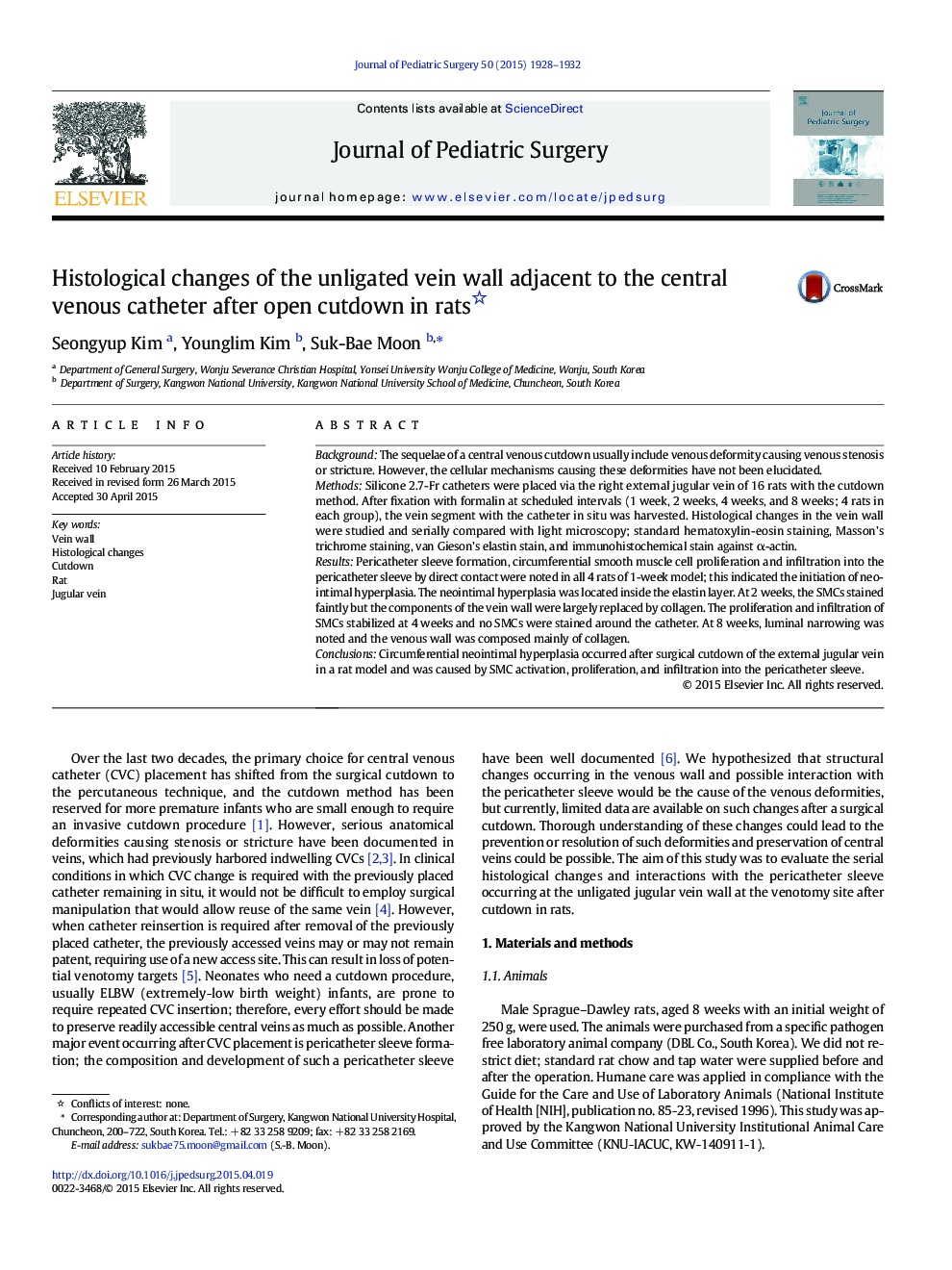| Article ID | Journal | Published Year | Pages | File Type |
|---|---|---|---|---|
| 4155106 | Journal of Pediatric Surgery | 2015 | 5 Pages |
BackgroundThe sequelae of a central venous cutdown usually include venous deformity causing venous stenosis or stricture. However, the cellular mechanisms causing these deformities have not been elucidated.MethodsSilicone 2.7-Fr catheters were placed via the right external jugular vein of 16 rats with the cutdown method. After fixation with formalin at scheduled intervals (1 week, 2 weeks, 4 weeks, and 8 weeks; 4 rats in each group), the vein segment with the catheter in situ was harvested. Histological changes in the vein wall were studied and serially compared with light microscopy; standard hematoxylin-eosin staining, Masson’s trichrome staining, van Gieson’s elastin stain, and immunohistochemical stain against α-actin.ResultsPericatheter sleeve formation, circumferential smooth muscle cell proliferation and infiltration into the pericatheter sleeve by direct contact were noted in all 4 rats of 1-week model; this indicated the initiation of neointimal hyperplasia. The neointimal hyperplasia was located inside the elastin layer. At 2 weeks, the SMCs stained faintly but the components of the vein wall were largely replaced by collagen. The proliferation and infiltration of SMCs stabilized at 4 weeks and no SMCs were stained around the catheter. At 8 weeks, luminal narrowing was noted and the venous wall was composed mainly of collagen.ConclusionsCircumferential neointimal hyperplasia occurred after surgical cutdown of the external jugular vein in a rat model and was caused by SMC activation, proliferation, and infiltration into the pericatheter sleeve.
